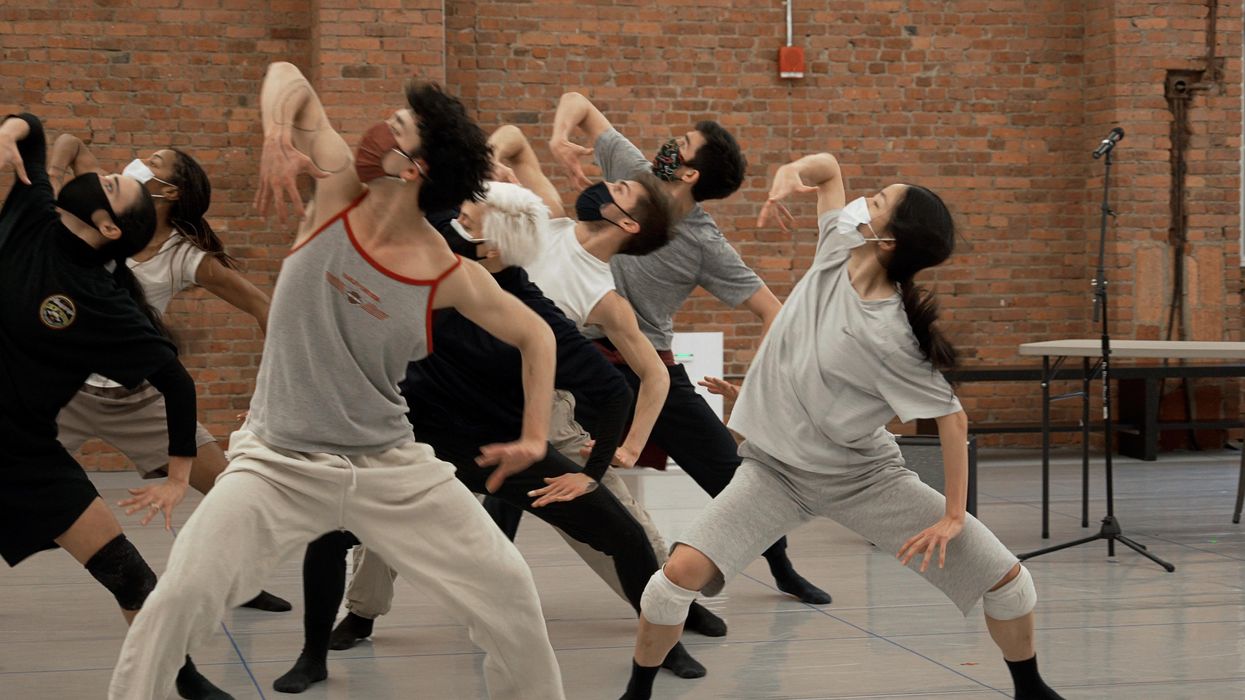Inside the Gibney Company's Radical Reinvention
The Gibney Company is not your average contemporary-dance troupe. The 12 dancers, who are helmed by three directors enacting a model of lateral leadership, go by the title “artistic associate.” As full-time employees, they make a competitive 52-week-per-year salary complete with health insurance, free on-site physical therapy, an annual artistic sabbatical and paid vacation. The company is deeply committed to activism, and part of each artistic associate’s job is to do regular work with survivors of partner abuse, and to design fellowship projects aimed to fill a particular need in the community.
The goal of these efforts is to cultivate the dancers as leaders, activists and entrepreneurs—a radical step in an industry that has for so long called professional dancers “boys” and “girls.”
When Gina Gibney founded her single-choreographer pickup troupe, then named Gibney Dance Company, in 1991, she never could have imagined that 30 years later it would be doubled in size; financially secure; housed in a thriving, community-centric organization; and poised to make its Joyce Theater debut. But while many would see this as a pinnacle, Gibney thinks of it as the start of something new. “This is the beginning of a very clear, dynamic and forward-focused future,” says the founder, artistic director and CEO.

Making Space for Others
Walking around New York City, it’s easy to spot contemporary dancers by their black tote bags bearing the phrase “Making Space for Dance.” This is the longtime tagline of Gibney, the umbrella organization which houses the company as well as an ample schedule of open classes, presenting programs, training residencies, video assistance, lecture series, a digital journal and partnerships with 11 other arts organizations.
“Making Space for Dance” is also an ethos that Gibney herself has held on to since her early days as a choreographer. Just a few years after arriving in New York City from Ohio in the early 1990s, Gibney leased a permanent home for her troupe: Studio 5-2 in 890 Broadway, the historic dance building that also houses American Ballet Theatre.
“It was never just our studio, but it became a space for the dance community,” remembers Gibney. “Seeing our colleagues fill it and animate it was such a fortuitous beginning.” Though Gibney Dance now boasts 23 studios, including three performance spaces, spread across two locations, Gibney’s never stopped keeping her eye on what the field needs—even if that means stepping out of the way when necessary.
“The best thing I learned from Gina is to make an opportunity for the person beside you as you make one for yourself,” says Amy Miller, one of the company’s directors. It’s this mindset that’s allowed the company to remain flexible through so many iterations.
Until 2014, the company was dedicated to performing Gibney’s own work; for a decade this was done with an all-female ensemble. But as the organization continued to grow, Gibney knew it was time to take on a new role. She stepped away from choreography and day-to-day operations, and instituted Miller as a director. In 2017, Nigel Campbell became a director as well (both Miller and Campbell still perform with the troupe).
Today, the team works in a lateral structure: Campbell focuses on rehearsal direction, Miller spearheads the company’s community action, and Gibney oversees commissions and main-stage curation. All three believe that shared decision-making leads to more equitable choices, yet acknowledge that working together does take more time. “For me, shared leadership is a microcosm of activism in and of itself,” adds Miller.
Since transforming into a repertory company, the group has worked with dancemakers including Bobbi Jene Smith, Shannon Gillen and Shamel Pitts. “I feel like Gina is still choreographing, she’s just choreographing in real estate and in culture and in relationships,” says Miller of the shift. Gibney agrees: “Being founded as a choreographer-led company has informed everything about how our organization has grown. But during this period of rapid growth, I very intentionally let that go and turned to another chapter.”
“Like a Lightning Bolt”
Gibney refers to her original goal of directing a dance company as a small (“but important”) dream. But the intervening years have allowed her to dream on a bigger scale than she’d ever thought possible.
In January of 2020, the company received a new opportunity to do so in the form of a $2 million gift donated by philanthropist Andrew A. Davis. Gibney thinks of the gift “like a lightning bolt”: The company has since doubled in size, hiring six new dancers in the past year, including Rena Butler as a choreographic associate, and bringing in a general manager to help with the day-to-day.
This rapid growth is what’s allowing for the company’s Joyce debut, scheduled for November 2–7 and made up of three world premieres by Butler, Sonya Tayeh and Alan Lucien Øyen. The program will mark Butler’s Joyce choreographic debut and the first time that the work of Øyen, who’s based in Norway, will be seen in New York City.
“We’re excited by what the Gibney Company can do because they’re bringing in new names, which is a way for our audiences to be introduced to choreographers we might not be able to take the risk on ourselves,” says Aaron Mattocks, the Joyce Theater’s director of programming.
After a 30-year legacy performing in smaller venues, making it to the Joyce stage is a triumphant announcement to the dance world that the Gibney Company is more than just a studio ensemble. The donation is also enabling them to start touring, plans of which are still in the works.
 Rehearsing Sonya Tayeh’s premiere Shantel Prado, Courtesy Gibney
Rehearsing Sonya Tayeh’s premiere Shantel Prado, Courtesy GibneyFocusing Outward
While much has changed for the Gibney Company in the past year and a half, the troupe’s commitment to advocacy and activism has remained steadfast. Since the company’s founding, Gibney has braided work with survivors of domestic violence into her work in the studio. Today, artistic associates are trained by social workers and therapists to understand how trauma impacts the body, and how dance can be used as an intervention, in order to work in the community. They also each take on a Moving Towards Justice Fellowship, leveraging the Gibney organization’s resources to respond to the needs of the dance field. Two that currently stand out to Gibney are Jesse Obremski’s Our Paths, a multimedia online platform that cultivates leadership through empathy, and Leal Zielínska’s Okay, Let’s Unpack This, which provides free therapy and other mental health resources for dancers.
After years working for dance companies where he was asked to leave himself at the door each day, when Campbell first joined the Gibney Company as a dancer in 2015 he felt like all the disparate parts of himself were finally coming together. “I’d always loved dancing, but I knew I had something to say, and I didn’t necessarily know how to say it or have the platform to say it,” he says. “Here it’s a 360 model where we are advocates and entrepreneurs and dancers, and all of that is part of our job description.”
Dance requires a lot of focus on the self, but the outward-facing nature of the artistic associates’ roles allows for a company culture focused on radical honesty, risk taking and what Miller refers to as a “softened” sense of competition.
“This is a grand experiment, and that’s exciting to me,” adds Campbell, continuing in Gibney’s spirit of open-minded adaptability. “We don’t know what this is going to be, which means our potential is unlimited. Our work is to show up every day as a company and say yes to the possibility of what this experience has to offer to us as a company, to the field and, really, to society.”





